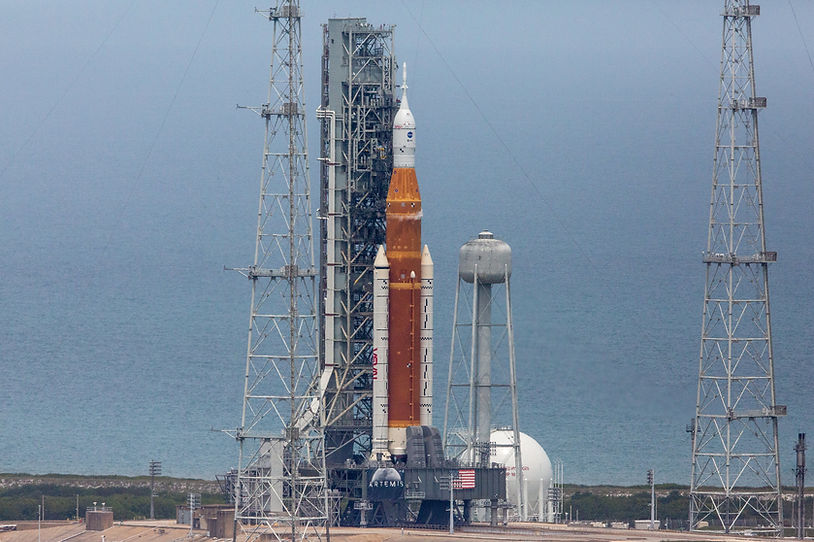By: Tony Lu
After completing a critical test of the Space Launch System, also known as SLS, moon rocket Artemis 1, NASA is declaring the rocket to be ready for launch, setting a window for a date between August 23rd and September 6th.
The test conducted last week, known as a “wet dress rehearsal,” comprised of completely fueling the SLS with its fuel to be used during the launch: namely, liquid hydrogen and oxygen. Though the countdown was aborted at T-29 seconds due to a hydrogen leak, NASA engineers called the test successful and determined the testing process to be complete after analyzing data from the test.
If successful, the unmanned Orion landing capsule into moon orbit for one month and return to Earth safely during the mission. This would pave the way for a future manned orbit, Artemis II, to be scheduled for about 2024. Finally, the first planned moon landing in the Artemis mission would be scheduled in 2025. All three of these missions comprise NASA’s attempt to establish a sustainable presence on the moon, the goal of the Artemis program, hopefully by 2030. Last week’s test was the fourth wet dress rehearsal NASA conducted on the rocket after three less successful previous tests.
Before the launch, the enormous rocket will be towed back to the Vehicle Assembly Building to be manually checked a final time and readied for the upcoming launch. There, it will stay for about six to eight weeks before it is moved back to the launch pad, where technicians would make final preparations for the last ten to fourteen days.
Scientists at NASA determined the vehicle had no major flaws despite the hydrogen leak because the rocket was able to be completely loaded and depleted of all its fuel. The material of the rocket that was causing the leak is planned to be replaced as soon as possible.
The mammoth rocket, over 322 feet or equivalently 32 stories tall, held over 700,000 gallons of liquid nitrogen and hydrogen when it was fully fueled. According to Phil Weber, a senior manager in charge of NASA’s EGSP (Exploration Ground Systems Program), all but 13 of the 128 planned functions to be executed during testing were accomplished by the SLS during the test. Such hydrogen leaks had been a common problem for NASA technicians back in the days of the space shuttle, where they were one of the most common causes of launch delays and scuttles, where planned launches would be commonly postponed indefinitely or abandoned. Weber believes that moving ahead with the planned launch despite the minor setback would be optimal to guarantee the timeliness of the Artemis program.
The SLS rockets and Orion capsule will build the foundation of NASA’s Moon to Mars program. The rocket is currently NASA’s only method to be able to deliver both supplies and human astronauts to the moon, and ultimately farther destinations such as Mars, in one flight. In seven seconds, the core of the rocket was able to generate over 1.6 million pounds of thrust — in other words, it was able to generate enough energy to lift 1.6 million pounds — according to Steve Jurczyk, a NASA administrator.
The first such test of the SLS rocket was conducted on January 16th. Before the test was scuttled, the four engines that comprised the core stage fired for one minute, an outcome that prompted further longer tests of the core engines.
The second test was also relatively successful, in which NASA was able to verify many conditions of the engines to guarantee smooth operation and align the engines as it would during the launch itself. The core engines were able to generate thrust for over eight minutes, which would be enough during the launch attempt.
The core stage of the rocket was designed and constructed by Boeing, while the RS-25 engines were a group construction, headed by Aerojet Rocketdyne.
Sources: https://www.nasa.gov/press-release/nasa-mega-moon-rocket-passes-key-test-readies-for-launch
https://www.washingtonpost.com/technology/2022/06/23/nasa-moon-sls-rcoket-launch/
https://www.space.com/artemis-1-moon-mission-wet-dress-rehearsal-success











